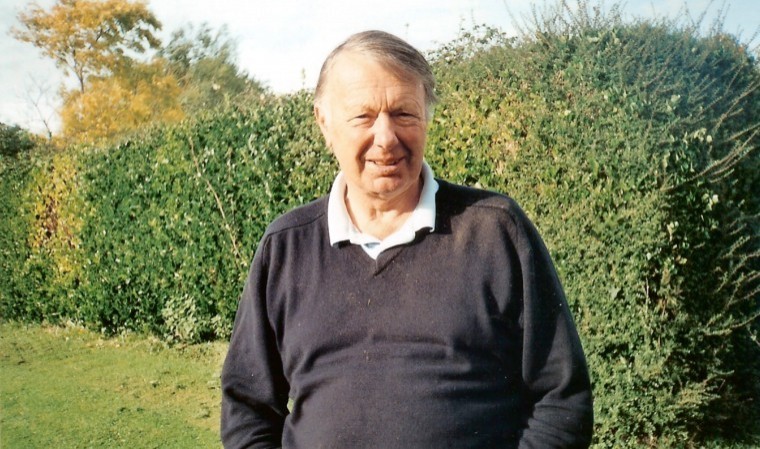Everything on any farm, dairy or otherwise, has to be governed by that particular business’s ability to generate enough income to cover costs, a situation which has been increasingly hijacked by the shenanigans of milk buyers as they have clubbed together quite brutally destroying the confidence, and futures, of many dairy farmers nationwide.
To survive this situation those producers who plan to continue in milk have had to make their individual plans to ensure they are still able to pay their bills, farm to a sound standard and progress. Think we’ve been here before!
I’m finding it hard to deal with the lack of resolve still being shown by government in taking a strong grip on TB. As a business we try to work with that situation on this farm towards what one hopes will be the likely position in five plus years’ time. By then the crisis will have, perhaps, finally been faced, and TB in UK cattle will be fast receding. If neither scenario (or an effective vaccine) emerges by then there is no really sustainable future for a dairy industry in the UK.
For many months now, as milk prices for all but the chosen few have gone through the floor, I have alluded to the cost of running robots under such conditions. Ours were bought in 2009/10 when milk price growth was encouraging, costs relative and prospects bright. Now with quotas long gone, milk around 18/20 pence per litre and servicing/parts/ costs rising inexorably, the sums are simply unsustainable.
So we have taken the decision to refurbish our old, 12/12 herringbone, and reduce operating costs. As an example, once, last winter, the routine service/replacement costs for the robots almost exceeded the total milk receipts for the month’s milk.
This change will be a big step for us and is disappointing. But, as we still plan to continue with cows, we had to act. Things will come right eventually and farmers need to hang on. However losing in excess of 10ppl (production cost versus milk value) soon adds to upwards of £100,000 to £150,000 plus annually, which can hardly be ignored! Put into perspective that’s potentially a loss exceeding £300 a day, 365 days a year.
Then, just to make life even more complicated we decided, in late 2015, to erect a specialised straw barn to free other buildings for youngstock rearing, and, most importantly, remove a potential fire risk from storing straw in the main buildings. Since the South Downs National Park Authority is now responsible for everything that happens in the area, and lots of things that don’t, we needed their approval. This process has been a nightmare.
We went to every length to get the design right before presenting the plans. Having built/erected some seven barns over the years I did feel pretty confident a competent planning department would give us the thumbs up and rubber stamp the application. How wrong I was. The authority’s “sustainable economy officer” (SEO) was himself very supportive and encouraging. But, unfortunately, when it came up for approval things deteriorated.
Although they granted us provisional permission in mid July, they stopped further progress by making that permission conditional – but on absurd points. For example, in our application we had proposed the building was to be constructed of similar materials/colour as our two closest modern barns.
However their landscape expert didn’t like the (normally acceptable) natural grey cement roof. I’m told she even suggested we used red. Neither did she want the specified concrete base side/end panels or the olive green box profile side cladding. Instead she wanted timber cladding, from ground level to eaves. Since its purpose is as a straw store, we specifically chose concrete and tin because from long experience and observation they are less likely to burn. Basic commonsense, or what? But objections had to be overcome, slowly…
All this time the builders were fretting to get the work under way. We ourselves needed to excavate the chalk base so the barn foundations could be set in and made ready to receive straw from this year’s harvest. Yet the planning terms forbade us starting any ground work till these issues were resolved. This delayed work/completion from mid July until, at best, late early November. This meant close to 1,000 big straw bales having to be temporarily housed for later restacking into the new barn (if it’s ready) or, if not, sheeted outside. Very frustrating.
Bales are presently stacked in the cows’ winter quarters so unless we remove them before housing, the animals will have to spend their nights out, whatever winter brings.
Finally at the end of August, again with great help from the said SEO we managed to rouse the landscape officer to sign off the absurd conditions and are now working, against the clock, to try to make up time. And the barn is exactly as we submitted the plan, originally.
I recently mentioned the need for Deathra to introduce a roadkill policy to try to identify the level of TB in dead badgers, and indeed deer. Now we see one is here. Except that West Sussex is being excluded, unless farmers pay the costs.
I suppose that is what one would expect but, since the Downs of West Sussex are a natural transit route from Hampshire eastwards through to the even worse infected Newhaven area, one feels the importance of identifying infection might be invaluable.
Meantime potato lifting is well under way, with the bulk off in true dustbowl conditions, yielding some 32/34 tonnes a hectare.




